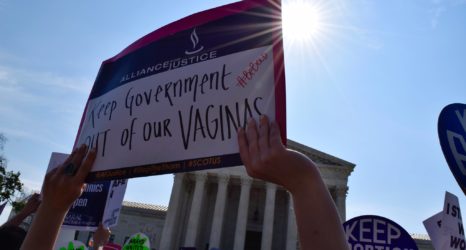As hundreds of thousands of Rohingya survivors fled to Bangladesh over the past two years, the abuse they suffered in Burma has made headlines.
Their stories are horrific—recounting brutal episodes of torture, murder and sexual violence, often committed in public and in front of family and community members. In different ways, so are their experiences with the press.

Some Rohingya survivors of sexual violence have reportedly been interviewed as many as 70 times each by media outlets, UN bodies and non-governmental organizations—posing serious challenges to the health and safety of survivors and to future justice efforts.
At first glance, the idea that sexual violence can be over-documented may seem counterintuitive. Don’t we want as much evidence as possible to prosecute the perpetrators of these crimes? In practice, however, uncoordinated and overzealous documentation harms both accountability efforts and the well-being of survivors.
The adage that “sex sells” is true in advertising and seems equally true in reporting, even in the coverage of atrocity and human rights abuse. As journalists and advocates cover stories of sexual violence in conflict, we must make sure not to sensationalize or exploit survivors’ suffering in order to make an impact.
Survivors of sexual violence face immense challenges in refugee camps, including stigma and social ostracization, which are compounded by lack of access to counseling and other health services. As a marginalized group, Rohingya women are also particularly vulnerable to coercion and incentives to give interviews—a practice that is discouraged by documentation best practices and journalistic ethics, but which occurs nonetheless.
In Cox’s Bazar, where most Rohingya refugees now live, the relative safety and ease of access for international journalists and aid groups has made it easy to interview survivors of the sexual and gender-based crimes committed in Myanmar. These documentation efforts can do more harm than good when evidence is collected without a clear understanding of how or why it will be used.
In past international justice efforts, the existence of prior conflicting statements has called survivors’ testimony into question. During the International Criminal Tribunal for Former Yugoslavia’s case Prosecutor v. Kunarac, the prosecution used prior statements in an attempt to discredit the testimony of “Witness 87.” Her testimony, which detailed nine months of captivity and repeated rape by Serbian soldiers, was challenged based on inconsistent elements from years prior.
To avoid these types of conflicts, many international justice mechanisms—including the International Criminal Court—have policies prohibiting testimony from survivors who have already given interviews due to these same concerns about conflicting and potentially unreliable statements.
In addition to complicating accountability efforts, repeated interviews can negatively impact the mental health of survivors and put them at increased risk within their communities. Interviewers who have not been trained in the best practices for documenting gender-based violence may place their subjects in harm’s way by failing to adhere to standards of informed consent, revealing the survivor’s identity to members of their community or asking probing questions that re-traumatize the survivor. When sexual violence survivors recount the details of their experiences they may re-live the events that they are describing, reinforcing the mental and emotional damage of the initial trauma.
The core ethical guideline for documenting sexual violence in conflict is “do no harm.” Documentation efforts must first and foremost ensure that the survivor’s safety and dignity is centered in all investigations. Although some risk is unavoidable if the survivor decides to tell their story, all efforts must be made to minimize the harm to their health and well-being.
A key component of the “do no harm” framework limits interviews of a survivor unless their testimony is “strictly necessary and the information is not otherwise available.” When a single survivor is interviewed again and again, this tenet of “do no harm” is clearly violated.
Documentation is essential to raise awareness and ensure that justice can be achieved, and because crimes of sexual violence are often highly stigmatized and therefore under-reported, it is a promising sign for accountability efforts that the widespread violence against Rohingya women has been so widely recorded. But the groups documenting these atrocities must find better ways to responsibly gather information as well as develop means to collaborate and share.
Journalists covering sexual violence must seek to “do no harm.” Survivors’ safety—and their chance at justice—is at stake.





